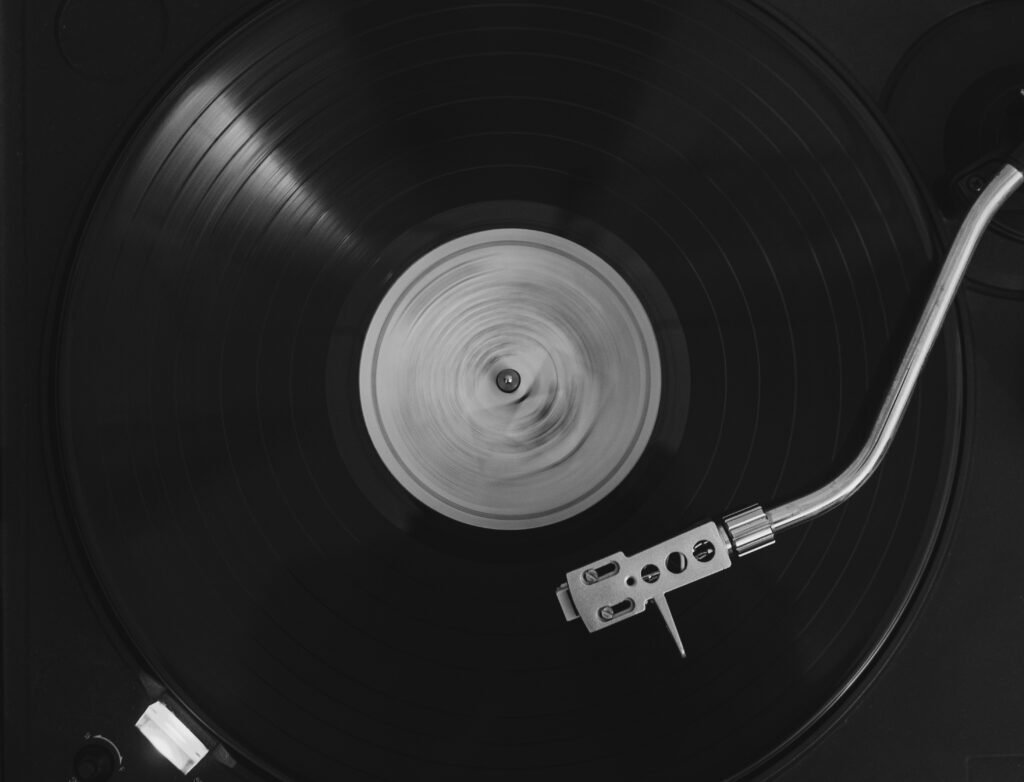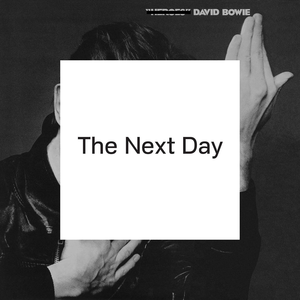When David Bowie released The Next Day in 2013, it marked a thunderous return from an artist many had assumed had quietly exited the stage. His prior album, Reality (2003), had been followed by a decade of near-total silence, during which rumors of retirement loomed large. But Bowie’s reemergence was not a casual nod to his enduring legacy—it was a deeply calculated and provocative statement. The Next Day arrived as a bold, enigmatic entry in his discography, both revisiting past personas and forging new terrain.
Set against the backdrop of an evolving music landscape, where rock’s dominance was being challenged by electronic, hip-hop, and pop acts, Bowie’s 24th studio album seemed at once defiant and self-aware. Its release strategy—a surprise announcement paired with the single “Where Are We Now?”—capitalized on the mystique of his absence. The stark cover design, repurposing the iconic “Heroes“ album artwork with a disruptive white square and strikethrough text, further telegraphed a duality: homage and rebellion, reflection and reinvention.
Sonic Exploration

Production Quality
The production of The Next Day strikes a delicate balance between clarity and grit, a testament to Bowie’s longtime collaborator Tony Visconti. The album’s sound is polished but not overly pristine, retaining an organic edge that complements its thematic explorations of mortality and chaos. Tracks like “Dirty Boys” and “If You Can See Me” lean into a rawer, almost live-sounding energy, while others, like the reflective “Where Are We Now?”, are meticulously layered, lending a cinematic quality to their introspection.
The mixing deserves special mention, particularly in the way it foregrounds Bowie’s voice. Unlike some of his earlier albums where vocals were buried or heavily processed, here they are front and center, conveying an immediacy that feels vital. This approach enhances the lyrical themes of confrontation and self-awareness, ensuring Bowie’s words resonate with unvarnished intensity. However, some may argue that the production occasionally feels uneven, with certain tracks—such as the frenetic “Boss of Me”—suffering from a muddier sonic palette compared to the album’s standout moments.
Musical Arrangements
The Next Day showcases Bowie’s mastery of musical arrangement, weaving together an eclectic array of instruments and textures. The album’s foundation is rooted in rock, but it often veers into unexpected territory. Saxophones, reminiscent of his early glam-rock days, slink menacingly through “Dirty Boys,” while sharp bursts of guitar punctuate the title track with a sense of urgency. The drum work, particularly on tracks like “(You Will) Set the World on Fire,” is propulsive and commanding, driving the songs with relentless energy.
Vocally, Bowie is as dynamic as ever, shifting effortlessly between dramatic crooning and snarling delivery. The use of backing vocals, particularly in “Love Is Lost,” creates a haunting, almost choral effect that adds depth to the track’s ominous mood. Elsewhere, the sparse arrangement of “Where Are We Now?” allows Bowie’s vulnerable vocal performance to take center stage, its simplicity amplifying its emotional weight.
While the arrangements are undeniably sophisticated, they occasionally tread familiar ground. Some tracks echo earlier eras of Bowie’s career—most notably the Berlin Trilogy and Scary Monsters (And Super Creeps)—without fully reimagining them. This reliance on past motifs could feel redundant to some listeners, though others might appreciate the continuity.
Genre Elements
Bowie’s sonic palette on The Next Day is firmly rooted in rock, but it branches into a variety of subgenres, often blurring their boundaries. The album flirts with post-punk energy in “Valentine’s Day,” art-rock grandeur in “The Stars (Are Out Tonight),” and even gothic atmospherics in “Heat.” There’s a bluesy swagger to tracks like “Boss of Me,” while “If You Can See Me” injects avant-garde elements, with frenetic rhythms and angular melodies.
What’s striking is Bowie’s ability to make these disparate influences cohere. While the album doesn’t push genre-blending into uncharted territory, it demonstrates a masterful understanding of how to integrate varied styles into a unified whole. This eclecticism mirrors the album’s thematic exploration of fragmentation and identity, reinforcing its narrative on a sonic level.
However, the genre exploration might feel uneven to some. The shifts in style can be jarring, and a few tracks feel less inspired than others, as if they are simply nodding to past successes rather than breaking new ground. Still, The Next Day remains an engaging and multifaceted work, one that deftly navigates Bowie’s vast musical universe while leaving room for both triumphs and missteps.
Lyrical Analysis

Themes and Messages
At its core, The Next Day delves into themes of mortality, legacy, and the disquieting interplay between past and present. Bowie’s lyrics are laden with existential weight, reflecting on the inevitability of death while reckoning with the echoes of his own history. Tracks like the title song, “The Next Day,” and “Love Is Lost” simmer with a sense of confrontation, whether it’s against external forces or internal demons.
There’s also a strong undercurrent of historical and sociopolitical commentary. “The Next Day” alludes to themes of oppression and sacrifice, drawing loosely from religious and medieval imagery, while “Valentine’s Day” takes on gun violence with chilling brevity. Meanwhile, “Where Are We Now?” is an introspective journey, steeped in nostalgia for Bowie’s Berlin years, but tinged with an awareness of time’s relentless passage. This interplay between the personal and the universal gives the album a depth that rewards repeated listens, revealing new layers of meaning with each spin.
Lyrical Depth
Bowie’s lyrics on The Next Day straddle the line between concrete narrative and abstract poetry. Tracks like “The Stars (Are Out Tonight)” employ vivid storytelling, painting a surreal scene of voyeuristic fame and the inescapable pull of celebrity. Conversely, “Heat,” the album’s haunting closer, veers into cryptic territory, with lines like “And I tell myself, I don’t know who I am,” which invite interpretation rather than providing clear answers.
This lyrical duality is one of the album’s strengths—and its challenges. Bowie’s refusal to fully explain his intent leaves the listener to piece together meaning, a characteristic that some will find intellectually stimulating but others may see as frustratingly opaque. There’s a palpable sense that Bowie is reflecting on his own mythos while questioning its relevance, but he does so obliquely, layering the songs with symbolism rather than clarity.
Recurring motifs of faith, betrayal, and isolation further deepen the album’s complexity. Religious imagery surfaces repeatedly, particularly in tracks like “The Next Day” and “You Feel So Lonely You Could Die,” suggesting a preoccupation with morality and redemption. The fragmented nature of the lyrics mirrors the album’s broader themes of identity and dissonance, creating a mosaic of ideas that resist easy categorization.
Emotional Impact
The emotional resonance of The Next Day is undeniable, though its effects can vary wildly from track to track. Bowie’s lyrics often evoke a sense of unease or bittersweet reflection, forcing the listener to confront uncomfortable truths. “Where Are We Now?” is perhaps the album’s most affecting song, its meditative tone and simple yet poignant lyrics casting a long shadow of melancholy. Lines like “Just walking the dead” linger long after the music fades, encapsulating the album’s fixation on transience and memory.
In contrast, tracks like “Valentine’s Day” are chilling in their detached delivery, using stark, minimalist lyrics to amplify their emotional impact. Bowie’s ability to oscillate between grandiose drama and subtle intimacy lends the album a dynamic emotional range. However, this breadth may also contribute to its unevenness; some tracks, such as “Boss of Me,” lack the same lyrical punch, feeling comparatively lightweight amidst the album’s heavier hitters.
Cohesion and Flow

Track Progression
The progression of The Next Day is both ambitious and uneven, reflecting Bowie’s desire to embrace his multifaceted artistry while resisting the confines of traditional album structure. The album opens with its explosive title track, “The Next Day,” a driving, raucous number that immediately sets a tone of defiance. From there, the mood shifts frequently—sometimes dramatically—between aggression, introspection, and eerie calm.
While this variety showcases Bowie’s versatility, it can occasionally disrupt the album’s flow. For example, the transition from the raw, saxophone-laden “Dirty Boys” to the more restrained and wistful “The Stars (Are Out Tonight)” feels abrupt, as does the jump from the haunting introspection of “Where Are We Now?” to the propulsive energy of “Valentine’s Day.” These shifts are engaging in their unpredictability but may leave some listeners yearning for a more deliberate sequencing that connects the tracks in a smoother narrative or emotional arc.
Nevertheless, the second half of the album fares better in terms of cohesion. Songs like “You Feel So Lonely You Could Die” and “Heat” build toward a reflective, somber conclusion, mirroring the thematic weight of the album’s exploration of mortality and legacy. This sense of resolution in the latter tracks helps to tie together some of the earlier disjointed moments, leaving the listener with a lingering impression of a journey completed, albeit through a circuitous route.
Thematic Consistency
On a thematic level, The Next Day achieves a surprising degree of consistency, despite its eclectic sonic palette. Bowie’s preoccupations with identity, time, and mortality weave through almost every track, creating an undercurrent that anchors the album. Even when the mood or style shifts dramatically, as in the transition from the defiant “The Next Day” to the melancholic “Where Are We Now?,” the thematic throughline remains intact.
However, the album’s stylistic diversity does present challenges to its cohesion. Tracks like “If You Can See Me,” with its frantic, avant-garde structure, feel at odds with more straightforward rock numbers like “I’d Rather Be High.” Similarly, the occasional callbacks to Bowie’s earlier work—whether intentional or subconscious—can feel like a double-edged sword. While they ground the album in his broader oeuvre, they also risk making The Next Day feel more like a patchwork of eras than a fully realized standalone project.
Despite these tensions, Bowie’s lyrical and emotional consistency helps to bind the album together. His voice, commanding and reflective, serves as the glue that holds these disparate elements in place. Though The Next Day may not follow a traditional narrative arc or sustain a single mood throughout, its willingness to embrace dissonance and contradiction feels intentional, mirroring the complexity of its themes.
Standout Tracks and Moments
Highlight Key Tracks
“The Next Day”
The opening track is a masterclass in establishing tone and intent. With its relentless, churning rhythm and defiant lyrics (“Here I am, not quite dying”), Bowie sets the stage for the album’s themes of resilience and reinvention. The ferocity of the guitars and Bowie’s snarling delivery make it one of the album’s most electrifying moments, demanding attention from the first note.
“Where Are We Now?”
This introspective ballad stands out as the emotional centerpiece of The Next Day. Bowie’s fragile vocal delivery, paired with a sparse, haunting arrangement, evokes a sense of nostalgia tinged with sorrow. The lyrics’ references to Berlin landmarks create a poignant connection to his past, making this track a deeply personal and reflective highlight.
“The Stars (Are Out Tonight)”
One of the album’s more accessible tracks, this art-rock gem is driven by a hypnotic rhythm and Bowie’s evocative storytelling. Its exploration of celebrity culture and the interplay between fame and humanity is both biting and poetic, showcasing Bowie’s sharp observational skills.
“Love Is Lost”
With its ominous synth undercurrent and brooding lyrics, “Love Is Lost” captures a sense of foreboding that permeates much of the album. The track’s haunting simplicity is amplified by its use of layered vocals and hypnotic repetition, creating a chilling atmosphere that lingers long after it ends.
“You Feel So Lonely You Could Die”
This dramatic ballad is among the album’s most arresting moments, with its swelling orchestration and intensely emotional delivery. Bowie’s voice is filled with both accusation and lament, and the track’s climactic build feels like a cathartic release of all the tension that precedes it.
Memorable Moments
The Guitar Riff in “The Next Day”
The jagged, angular riff that drives the album’s title track is a defining moment, embodying the urgency and aggression that characterize much of the album. It’s both raw and infectious, grounding the song in a gritty, visceral energy.
The Vulnerable Chorus of “Where Are We Now?”
The repeated plea, “Where are we now?,” delivered with Bowie’s aching, delicate voice, distills the essence of the album’s reflection on time and identity. It’s a moment that feels both intimate and universal, resonating deeply with listeners.
The Saxophone in “Dirty Boys”
The sleazy, snarling saxophone solo on “Dirty Boys” is a standout instrumental moment, adding a touch of menace and unpredictability to the track. It’s a reminder of Bowie’s knack for unconventional arrangements and his ability to inject character into every element of a song.
The Drum Outro in “You Feel So Lonely You Could Die”
The militaristic drum outro on this track serves as a chilling callback to the iconic rhythm of “Five Years” from The Rise and Fall of Ziggy Stardust and the Spiders from Mars. It’s a subtle yet powerful nod to Bowie’s legacy, tying the past and present together with quiet poignancy.
The Cryptic Closing of “Heat”
The final track, “Heat,” concludes the album on an unsettling note, with Bowie’s cryptic lyrics and sparse instrumentation creating a sense of ambiguity and unease. The haunting refrain, “And I tell myself, I don’t know who I am,” encapsulates the album’s themes of identity and introspection, leaving listeners in a state of contemplative silence.
Artistic Contribution and Innovation

Place in Genre/Industry
When The Next Day emerged in 2013, it landed in a musical landscape dominated by shifting trends. Indie rock and electronic music were ascendant, while mainstream pop leaned heavily on maximalist production and digital experimentation. In this context, Bowie’s album—a rock-centric work steeped in lyrical introspection and gritty, organic production—felt like both a throwback and a quiet rebellion.
Rather than chasing current trends, Bowie leaned into his own artistic history, creating an album that engages with rock’s past while subtly modernizing its sound. The decision to revisit themes and tones from his Berlin Trilogy and other seminal works gave The Next Day a sense of continuity within Bowie’s oeuvre, but its release strategy—complete with a surprise announcement and minimal promotion—positioned it as forward-thinking. Bowie’s reclusive mystique and sudden reemergence were disruptive in an industry increasingly reliant on social media visibility and extended marketing campaigns.
While The Next Day doesn’t radically redefine its genre, its place in Bowie’s discography elevates it as a cultural statement. It demonstrated that legacy artists could still command attention, not by pandering to nostalgia but by crafting work that reflects on their past with a critical, creative lens.
Innovation
One of the most innovative aspects of The Next Day lies in its conceptual approach. By reappropriating the iconic “Heroes” album cover, Bowie instantly reframed his legacy, transforming a symbol of triumph into something fractured and questioning. This visual choice signaled the album’s intent: to engage with Bowie’s storied past while actively deconstructing its mythology.
Thematically, The Next Day stands out for its bold exploration of mortality, fame, and identity through a fragmented lens. Bowie avoids straightforward nostalgia, opting instead for a meta-commentary on his career, his public persona, and the universal human condition. This self-referentiality, paired with its cryptic lyricism, challenges the listener to think critically about the interplay between art and time.
Musically, the album innovates not through groundbreaking new sounds but through its synthesis of familiar elements into something fresh. Tracks like “The Next Day” and “Love Is Lost” blend post-punk angularity with modern rock production, while the minimalist arrangement of “Where Are We Now?” uses silence and space to create emotional resonance. Bowie’s ability to integrate his influences—ranging from glam rock and art rock to more experimental, avant-garde textures—into a cohesive yet unpredictable whole is a testament to his creative vision.
Additionally, Bowie’s reemergence itself was an act of innovation. By staying silent for a decade, he created an aura of anticipation that amplified the impact of his return. The lack of pre-release hype defied industry norms, letting the music speak for itself in an era of oversaturation.
Closing Thoughts

The Next Day stands as a testament to David Bowie’s ability to surprise, even decades into his storied career. Its strengths lie in its fearless confrontation of mortality and identity, its thoughtful interplay between past and present, and its ability to synthesize Bowie’s many artistic eras into a cohesive, albeit occasionally uneven, body of work. Tracks like “Where Are We Now?” and “Love Is Lost” highlight Bowie’s enduring knack for emotional depth and innovation, while the album’s production and arrangements reflect a seasoned artist who remains as ambitious as ever.
That said, The Next Day is not without its flaws. Its eclecticism, while showcasing Bowie’s versatility, can sometimes feel disjointed, with shifts in tone and style that disrupt the album’s flow. Additionally, a handful of tracks lack the immediacy or inventiveness of the album’s strongest moments, making them feel more like fillers than essential contributions to its narrative.
Despite these shortcomings, The Next Day is undeniably a significant work, one that captures Bowie at his most introspective and self-aware. It’s an album that rewards patience and close listening, offering layers of meaning and emotion for those willing to engage deeply.
Official Rating
We award The Next Day with a rating of 8 out of 10. This rating reflects the album’s strong thematic core, evocative songwriting, and inventive production, balanced against occasional lapses in cohesion and a handful of less memorable tracks. The Next Day may not redefine Bowie’s legacy, but it enriches it, offering a bold and thought-provoking meditation on the artist’s life and work. It’s an album that acknowledges the weight of the past while refusing to be constrained by it, leaving a lasting impression as one of Bowie’s most profound late-career statements.
